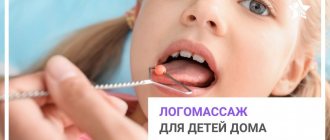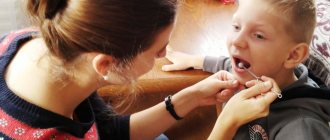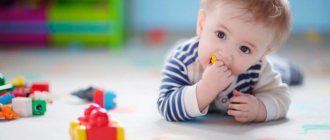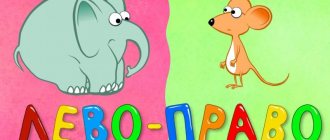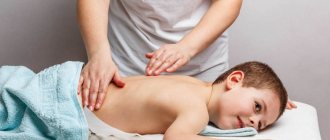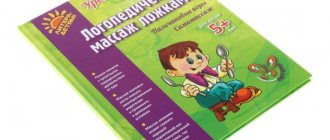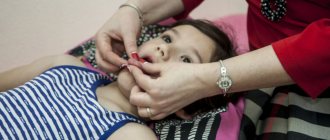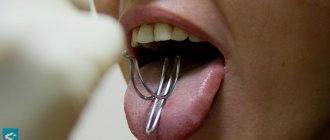Doctors Cost
Price list Doctors clinic
Speech therapy massage is a method of restoring normal speech function, which is widely used as part of an integrated approach. It allows you to speed up the process of correcting speech defects and get impressive results in a short time. There are no age restrictions for the use of such a massage; it can be recommended by a pediatrician or prescribed by a speech therapist. Massage is provided as part of an appointment with a speech therapist.
This method can effectively complement articulation, breathing exercises, and other methods of stimulating the development of normal speech.
Order of conduct
There are two types of speech therapy massage. The first involves working only with your fingers, the second involves the use of special tools. A doctor can prescribe one or another type of massage for certain indications.
The procedure includes a combination of techniques:
- respiratory correction;
- massaging the facial muscles;
- neck muscle massage;
- massaging speech structures (tongue, inner surface of cheeks, lips) using a probe.
Manual or manual massage consists of stroking, pinching, and rubbing. In some cases, the doctor uses auxiliary instruments - a pacifier, a spatula, a toothbrush. The specialist’s actions are aimed at kneading the muscles and improving the blood supply to the tissues. Manual massage also includes acupressure, in which the master influences reflex zones.
Children's speech therapy massage using a probe was developed by speech therapist E. V. Novikova. This technique involves influencing areas of the speech apparatus using 9 different types of probe. The choice of a specific tool takes into account the problem area, as well as the severity of the speech disorder. Different shaped probes are designed to produce different effects.
At what age can the procedure be performed?
- From 0.3 years, both preventively and if the child has problems associated with various neurological conditions.
- For non-speaking children from 2 to 3 years old - as a “way of inducing speech.”
- For children from 3 to 4 years old, this is often the only method of influence, since the child cannot withstand traditional classes with a speech therapist.
Speech therapy massage for children is recommended for children with various speech disorders. To activate and correct speech defects, the procedure is used both as an independent method of treatment and as an integrated approach. Depending on the characteristics of the child, general medical indications and diagnostic results, the effectiveness of the procedure may vary.
Speech therapy massage for children allows for correction of the pronunciation of sounds, normalizes the functioning of the muscles of the speech apparatus, and improves the tone and condition of the voice. Even with severe symptoms of neurological abnormalities, the use of this type of massage gives effective, good results.
The number of procedures required for a course of massage is determined by a speech therapist-defectologist at the initial appointment.
Speech therapy massage should be carried out only after a thorough examination of the speech apparatus. If speech therapy massage is performed correctly, beneficial changes occur in the muscular and nervous system. After completing a course of speech therapy massage, children experience the following positive changes:
- The mobility of the muscles of the speech apparatus improves;
- General muscle tone, including facial muscles, is normalized;
- The muscles of the speech apparatus become more “calm”, convulsions, hyperkinesis and other pathologies disappear;
- The volume and amplitude of articulatory movements increase;
- Coordination and muscle memory are developed to extract the most complex sounds;
- Those muscles of the speech apparatus that previously did not have good mobility are activated.
In addition, massage from a speech therapist has a positive effect on the functioning of other body systems. In particular, the normal functioning of the articulatory apparatus helps to get rid of increased salivation (this may be due to insufficient mobility of some muscles).
Speech therapy massage also strengthens the pharyngeal reflex and promotes the development of facial muscles. The overall positive effect of this type of massage on the body also lies in the harmonious development of the nervous system. Mechanical effects on nerve endings have a beneficial effect on the work of the speech centers of the brain and, consequently, on the work of the entire organ as a whole.
Results of speech therapy massage
The method allows you to change the condition of muscles, nerve fibers, and blood vessels of the speech apparatus. This technique makes it possible to speed up the process of normalizing pronunciation, as well as the emotional state of children with speech defects. Massage can have a beneficial effect on tissues, improve the secretory function of the skin and activate blood and lymph flow. This leads to improved metabolic processes and oxygen supply to tissues.
The rhythmic movements of a specialist accelerate the outflow of venous blood, the function of lymphatic vessels improves, the structure of the muscular system changes (the elasticity of muscle fibers, contraction strength, and performance increase). The use of various techniques makes it possible to reduce the tone of spastic muscles and increase it with flaccid paresis.
Thus, speech therapy massage allows you to obtain the following effects:
- normalization of muscle tone, muscle contraction processes;
- stimulation of the muscles responsible for producing certain sounds;
- stimulation of blood circulation, acceleration of nerve impulses;
- relief of spasm;
- assistance in the child’s understanding of the controlled and uncontrolled areas of the speech apparatus and their management;
- decreased salivation caused by diseases of the nervous system;
- strengthening the pharyngeal reflex;
- facilitating the process of correcting sound pronunciation.
A speech therapy massage specialist will conduct a session as part of your appointment, and will also tell you how you can consolidate the results at home. He will explain some techniques so that you can independently stimulate the development of your child’s speech apparatus.
III. Features of logomassage for children at home
Where to get a massage, at home or in a clinic? Choose a place where your child will feel more comfortable. Some children go through the procedure better, find themselves in new conditions - they calm down and succumb to the doctor’s hypnosis. Other children love the familiarity of home, but behave restlessly in the clinic. Of course, the mother should be next to the baby to relieve his anxiety.
Logomassage is best done in a ventilated room. If you are going to massage your child’s mouth, make sure you wear gloves and a protective mask. All spoons, probes and other instruments used must be thoroughly washed and doused with boiling water.
Before the procedure, hands should be treated with a solution containing alcohol.
The child should feel well during the procedure, so it should not be done before bed or immediately after eating. Sessions don't have to be long.
Place your baby on the bed and place a pillow under his head or sit him in a chair. The main thing is that the child relaxes and nothing prevents him from breathing freely. A few words of encouragement wouldn't hurt.
Session duration depending on age:
- children under 2-3 years old – up to 8-10 minutes;
- preschool children – up to 17-20 minutes;
- from 7 years – up to 26-30 min.
Sessions can be repeated no more than three times a week. A sufficient course may include from 10 to 15 sessions.
Don't self-medicate! Before performing a massage at home, consult a specialist. The doctor should draw up a plan and show you the most appropriate massage movements for your child.
During the session, do not forget to talk to your child so that he does not get bored. You can tell your baby a fairy tale or play some nice music. You can sing the song yourself.
Now let’s look at specific logomassage techniques for children.
Contraindicated for whom
Massage is contraindicated for the following diseases:
- acute inflammatory processes in the oral cavity: viral diseases (herpes), rash caused by bacterial infection, gingivitis, etc.;
- enlargement of the submandibular lymph nodes;
- acute infectious disease;
- high body temperature;
- symptomatic epilepsy;
- intracranial hypertension.
Also, speech therapy massage is impossible in cases where the child, due to age or mental state, is unable to listen to the doctor, has a negative attitude towards his actions, and cannot sit still.
Contraindications
It seems that speech therapy massage is such a lifesaver with absolute usefulness and a mandatory result. However, this is not quite true. Parents should know that only a specialist can prescribe this procedure. The speech therapist will check the condition of not only the child’s speech, but also the articulation apparatus. In addition, it is important to know your medical history and undergo an examination by a neurologist.
Speech therapy massage is not indicated in the following cases:
- Infectious and viral diseases.
- Pustular skin diseases.
- Increased body temperature in a child.
- Strict contraindication - episyndrome, history of epilepsy!
- Recent sore throat. Before starting a massage course, you must wait at least 7-10 days after recovery.
Advantages of visiting the Family Doctor clinic
The advantage of speech therapy massage as part of a specialist appointment is its affordable price, which makes this procedure in demand in many cases of speech defects. We offer our patients quality care.
- Comprehensive diagnostics: accurate assessment of the state of the muscles of the speech apparatus, determination of the general state of health, speech disorders, etc.
- Team approach: combining advanced techniques and correction techniques to achieve the desired result.
- Professionalism of doctors: consultations are conducted by specialists with many years of experience.
To make an appointment at a time convenient for you, call the single contact center in Moscow, fill out the online appointment form or contact the clinic reception.
leave feedback
Conditions for holding
Speech therapy massage for children, as a rule, begins at the age of 4–5 years. According to indications, the course can be started earlier.
You need to create favorable conditions at home so that the sessions do not bring discomfort. The room should be quiet, warm and light. The massager's hands should be warm and clean. Make sure there are no scratches, inflammation, or foreign odors on your hand—perfume, aromatic oils, creams. Remove all jewelry. It is also necessary that the child is disposed to treatment and treats it calmly. It is unacceptable for the baby to cry and struggle.
The first speech therapy massage procedure for children can be short - no more than 5 minutes, especially if this is the first time for him. Then gradually increase the duration: after a week you can practice for 20–30 minutes. Focus on the age and reaction of the baby: if he becomes uncomfortable, uncomfortable, fear or nervous tension appears, it is better to interrupt the session. If you continue, despite the protest, next time he may refuse treatment altogether.
For good results, you need to practice regularly. Optimally 2 – 3 procedures per week. If you combine them with articulatory gymnastics and other activities, you will see the effect faster. Try not to take long breaks between sessions.
On average, a full course requires 10–20 sessions, sometimes more.
For massage you need to prepare a special oil or cream. Be sure to check for tolerance: apply a small amount of the product to the skin of your forearm and evaluate the reaction.
After treatment, wash your baby's face and rinse his mouth.
Where to find a logomassage specialist
Speech therapists deal with speech problems. Even if parents want to independently conduct logomassage for children at home, it is necessary to attend at least a preliminary consultation. The doctor will help determine the type of problems and schedule exercises to perform.
On the website 7hands.com you can find certified speech therapists who will conduct an appointment in their office or at the client’s home. To achieve optimal results, it is worth ordering at least one full course of logomassage. Parents will be able to attend the procedure and learn the influence techniques.
Professional logomassage will help solve several problems at once:
- improve understanding of other people's speech;
- express your own thoughts more clearly and clearly;
- use speech in socially acceptable ways (do not express your wishes by shouting, do not shout out individual sounds instead of spending time building full-fledged phrases).
A logomassage course can last from several weeks to several months. It is important not to skip procedures and do all your homework. And a positive result will not be long in coming.
Benefits and effectiveness of baby tongue massage
Speech therapy massage is the most effective method for correcting speech defects and developmental delay problems. The acupressure complex is absolutely painless and does not cause discomfort in the child, allowing:
- reduce emotional stress;
- activate the muscles of the tongue;
- correct sounds that are difficult for children (L and R, G and D, hissing);
- get rid of stuttering and voice disorders;
- reduce saliva secretion;
- improve speech breathing performance;
- normalize muscle tone.
The difficulty when massaging the tongue is that not every baby is ready to stay in one position with an open mouth for a long time - restless children tolerate manipulation more difficult, so psychological preparation on the part of parents is especially important.
Execution Sequence
Activating facial muscles
- At the same time, use the fingertips of both hands to make stroking and rubbing movements 7-10 times:
- to the temples from the center of the forehead;
- to eyebrow hair;
- on the eyebrows;
- around eyes;
- along the cheeks from the wings of the nose to the ears and from the chin to the ears.
- We rhythmically squeeze our chin.
- We knead the cheekbones and cheeks with spiral movements.
- Rub the cheeks by placing the index finger in the mouth and the thumb on the cheek.
- We pinch our cheeks.
Activating the lip muscles
- With your mouth closed or slightly open, stroke the upper and lower lips from the corners to the middle.
- We pinch the skin around the lips.
- Tap vigorously around the lips.
Activating the muscles of the tongue
- When activating a tongue massage, the movements are intense, directed from the root to the tip, mainly using rubbing and kneading techniques:
- rub the tongue with your fingers along, across, in a spiral from top to bottom.
- squeeze the sides.
- pinch the edges.
- pat the top with a spatula or toothbrush.
- We vibrate the tip of the tongue using a wooden spatula.
We activate the muscles of the neck and shoulder girdle
- We rub the side surface of the neck from bottom to top to the corners of the lower jaw.
- We rub the posterolateral surface of the neck from bottom to top from the shoulder blades to the back of the head.
- We ask the child to turn his head back and forth to the right and left, while simultaneously counteracting these movements with his hand.
Who needs an irrigator and why?
Dentists recommend using this device regularly to:
- better hygiene to prevent caries and other diseases;
- care of orthodontic structures (braces, veneers, dentures, bridges);
- treatment of chronic forms of gingivitis and periodontitis.
People cannot do without the device:
- suffering from bad breath;
- having a non-standard arrangement of the dentition;
- patients with diabetes mellitus.
The device can be used for both preventive and therapeutic purposes. It cleans teeth, interdental spaces, gum pockets and other hard-to-reach places from germs, plaque and food debris more thoroughly than other devices. Thereby reducing the likelihood of caries and other diseases and eliminating unpleasant odors.
Is it necessary to use an irrigator with installed braces, veneers, bridges and other structures? The answer is yes. The fact is that all orthodontic devices for correcting bites and solving other problems “like a magnet” collect microbes and food particles and, in the absence of proper care, can cause an exacerbation of existing diseases. In this case, you should take very good care of your oral hygiene. This is only possible with daily use.
This device is especially relevant for people suffering from diabetes. Unfortunately, with this disease, the blood circulation of the gums is impaired, and, as a result, periodontitis occurs. Regular massage performed with a pulsating jet improves their blood supply, maintaining dental health. This is also important for people who do not suffer from this pathology.
The irrigator is also used to treat certain diseases. To do this, instead of ordinary boiled water, use a special medical solution that has the required medicinal properties. For example, furatsilin, chlorhexidine, diluted rinses or various herbal decoctions.
But each method has contraindications. For advice on the use of a medicinal drug, you can contact dental specialists.
Whether you need a dental and oral irrigator at home is up to you, but remember that its effectiveness is achieved through regular use. In addition, by purchasing such a device for home use, you significantly save on the cost of dental procedures. And if other family members also use the device, then your savings will be two, three or even four times greater. In addition, any disease is easier to prevent than to treat later.
Contraindications – when is tongue massage harmful to a child?
The absence of contraindications is determined by a neurologist - the doctor documents the safety of the massage for the child (manipulations at home, in a government institution, or with a private specialist are prohibited without a certificate). You cannot massage your tongue if:
- there are injuries, wounds, cuts in the oral cavity;
- diagnosed with stomatitis, gingivitis, common infectious diseases;
- the child has enlarged lymph nodes;
- the child is afraid of the procedure - often the fear is caused by the unknown and the frightening appearance of the instruments;
- there are blood supply disorders, fungal infections, cancer;
- hypersensitive skin.
Doing a tongue massage on a child with your own hands is not easy; it is better to entrust this task to a professional massage therapist - ideally a child massage therapist, since such a specialist knows how to work with children, easily finds an approach to them, and carries out procedures without hysterics or discomfort for children. Moreover, without the proper experience and skills, a parent can injure the child, cause him pain and fail to achieve the goal - the manipulations will be useless, and invaluable time will be lost.
Who is tongue massage recommended for?
Tongue massage can be both stimulating and relaxing. And also combined, when one area of the tongue needs to be relaxed and the other stimulated! This is where the indications for tongue massage come from. Speech therapy massage is indicated for patients:
- with speech impairments;
- disorders of chewing and swallowing function;
- with malocclusion;
- undergoing orthodontic treatment (bite correction and teeth straightening);
- undergoing orthopedic treatment (dental prosthetics);
- with a short frenulum of the tongue for the purpose of non-surgical stretching;
- with hypertonicity of the tongue and masticatory muscles (bruxists and claunchers - people who clench and grind their teeth);
- with increased stress on the speech apparatus (teachers, lecturers, etc.).
Cost of tongue massage at Dial-Dent. Specialist in speech therapy massage.
At the Family Dental Tongue Massage or speech therapy massage, speech therapist-myofunctional therapist Tatyana Borisovna Tsukor is engaged. Graduated from Moscow Pedagogical State University. Lenin. Work experience more than 15 years. Speech therapist teacher of the highest qualification category. Laureate of the competitions “Heart given to children 2008” and “Heart given to children 2010”.
The cost of a session with a speech therapist is 3,500 rubles. The duration of the session is from 30 minutes to 50 minutes depending on the task and the age of the patient. If necessary, the session also includes speech therapy massage.
Being a unique speech therapist who has been collaborating with dentists for a long time and successfully, Tsukor T.B. conducts training courses for both orthodontists and speech therapists. The course covers all aspects of speech therapy massage. Of course, every orthodontist should know about the capabilities of such a powerful tool as speech therapy massage. Training is carried out both as part of presentations at congresses, and individually or in small groups.
Our speech therapist also conducts classes via Skype. The cost of such a lesson is 2500 rubles. As you understand, speech therapy massage cannot be done via Skype, so if you need a massage, you will still have to come to Dial-Dent.
You can make an appointment with the Family Dental speech therapist Tatyana Borisovna Tsukor by calling the clinic +7-499-110-18-01 or using the form on the website. You can ask questions about speech therapy, as well as massage training, to T.B. Zukor on her page in.
Massage technique at home
It is better to start massaging movements from the whole face so that he gets used to the situation and his tension goes away. Then gradually move on to the chin area and nasolabial fold. Movements are soft and smooth.
For lips
First, we rub our lips with our fingers, making circular movements from one corner to another. The direction on the lower and upper lips is different: from left to right, and from right to left. Then we pinch the lips and skin around the mouth, making circular movements with pressure. We finish the speech therapy lip massage with light spanks.
For language
The tongue is directly involved in sound pronunciation, so speech therapy massage of this part of the body is an important part of correcting speech disorders. You should achieve relaxation of the muscles of the upper and lower jaw, shoulder, neck, and tongue. If the baby has a pronounced gag reflex, then massage only the tip of the tongue.
The movements are:
- fixing the tip of the tongue between the fingers, moving it like a lever - up and down, back and forth;
- stroking the back of the tongue in a circle and lengthwise with the thumb, while the index finger is located below and supports it;
- stroking the lower surface of the tongue;
- vibrating movements by tapping and rocking the tongue;
- massaging the frenulum with finger movements up and down.
Stroke your baby's tongue with a cloth and a toothbrush. You can simply move them across your tongue, or you can “draw” letters.
If your baby has excessive salivation, use a napkin or handkerchief to prevent saliva from running off and irritating the skin.
For face
It will be useful to do a speech therapy massage of the entire face: massaging the forehead, cheeks, nose, and chin enhances the effect of the sessions. The procedure includes stroking, rubbing, kneading, and vibration of these areas. Do it exactly in this sequence.
The cheeks are massaged like this: we rub or knead the cheeks along the muscle fibers. The direction of movement is from the corners of the mouth towards the temples, then from the cheekbones to the lower edge of the jaw.
For the neck
Neck massage is performed before meals or two hours after meals. Please note that movements should be gentle. Strong pressure is unacceptable: large vessels and nerve trunks pass here. Perform turns and tilts of the neck to the right and left sides, forward and backward.
Light tapping movements of the cervical spine should be performed while lying on your stomach or sitting. Stimulation of this area not only develops speech, but also improves overall physical condition. After all, the work of the nervous system is activated, blood circulation improves, which means the brain is saturated with oxygen. But parents should act very carefully: they should not overexpose this area.
The procedure is as follows: movements from top to bottom along the neck, without affecting the spine. We operate with 2 or 3 fingers. Massage the trapezius muscle and shoulders.
Speech therapy massage of the neck also includes the ear area. This further stimulates the articulatory apparatus. The following exercises are effective: rubbing the earlobes, carefully pulling the earlobes down, kneading the tragus - a cartilaginous protrusion that is located in front of the ear canal.
